Subpleural Sparing
idiopathic, inflammatory, infectious, inhalational, cardiac, traumatic, and bleeding disorders. Specific disorders that can cause subpleural sparing patterns include nonspecific interstitial pneumonia (NSIP), organizing pneumonia (OP), pulmonary alveolar proteinosis (PAP), diffuse alveolar hemorrhage (DAH), vaping-associated lung injury (VALI), cracked lung, pulmonary edema, pneumocystis jirovecii pneumonia (PJP), pulmonary contusion, and more recently, Coronavirus disease 2019 (COVID-19) p
the density and distribution of lymphatics could explain preferential clearing of the subpleural regions during acute injury. T
Infection
PCP PJP COVID
Inflammation
Inhalational Crack Lung Vaping
Scleroderma NSIP and OP

Axial CT shows peripheral reticular changes, ground glass, bronchiolectasis at both lung bases, volume loss with crowding of the bronchovascular bundles posteriorly and subpleural sparing posteriorly. Note air-fluid level in the distended esophagus.
Ashley Davidoff MD TheCommonVein.net 110Lu 136598

59-year-old male presents with history of scleroderma, Raynaud’s disease, and ILD
Coronal CT shows bibasilar volume loss, reticular change, ground glass changes, bronchovascular thickening , bronchiectasis, and subpleural sparing, all features characteristic of NSIP
.
The lower image highlights the bronchovascular thickening volume loss bronchiectasis and subpleural sparing. The fibrotic process has resulted in traction of the secondary lobules in the region of subpleural sparing
Ashley Davidoff MD TheCommonVein.net 110Lu 136592c01
Trauma Hemorrhage
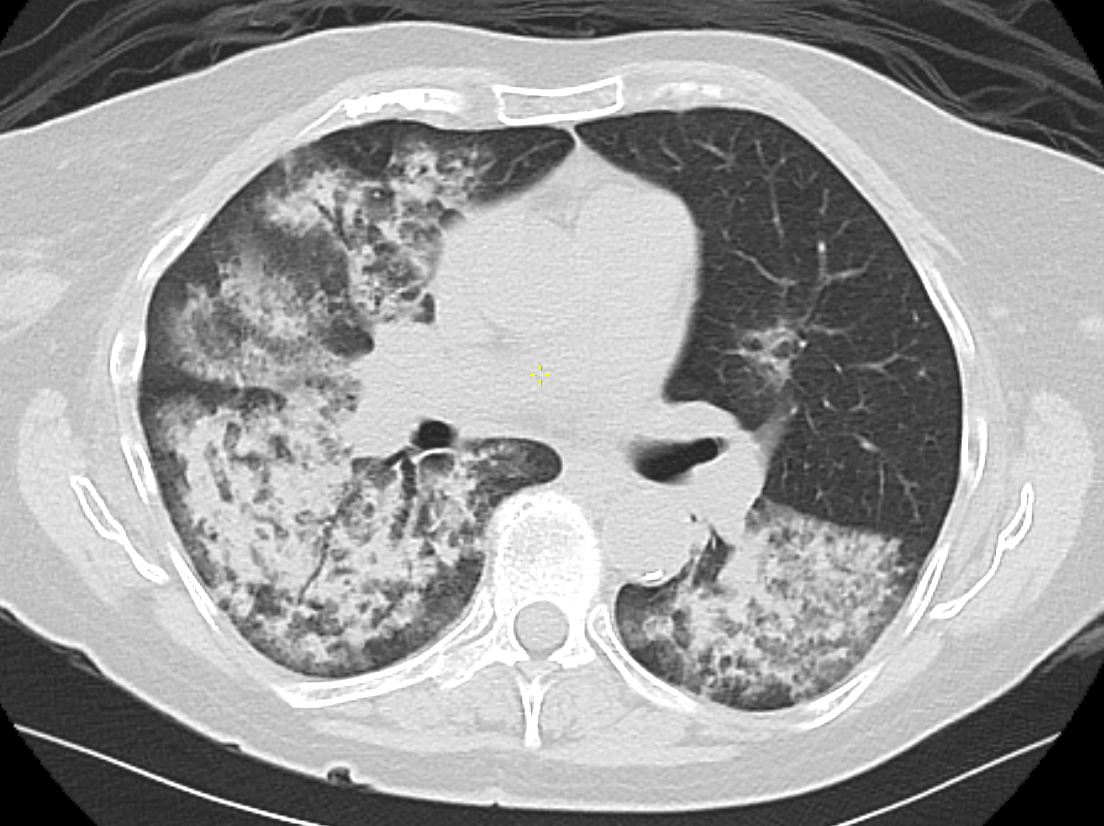
35 year old male in acute renal failure and respiratory distress with hemoptysis. CT shows multicentric segmental and subsegmental regions of consolidations and ground glass opacity in the upper and lower lobes with subpleural sparing consistent with pulmonary hemorrhage
Ashley Davidoff MD TheCommonVein.net 137274
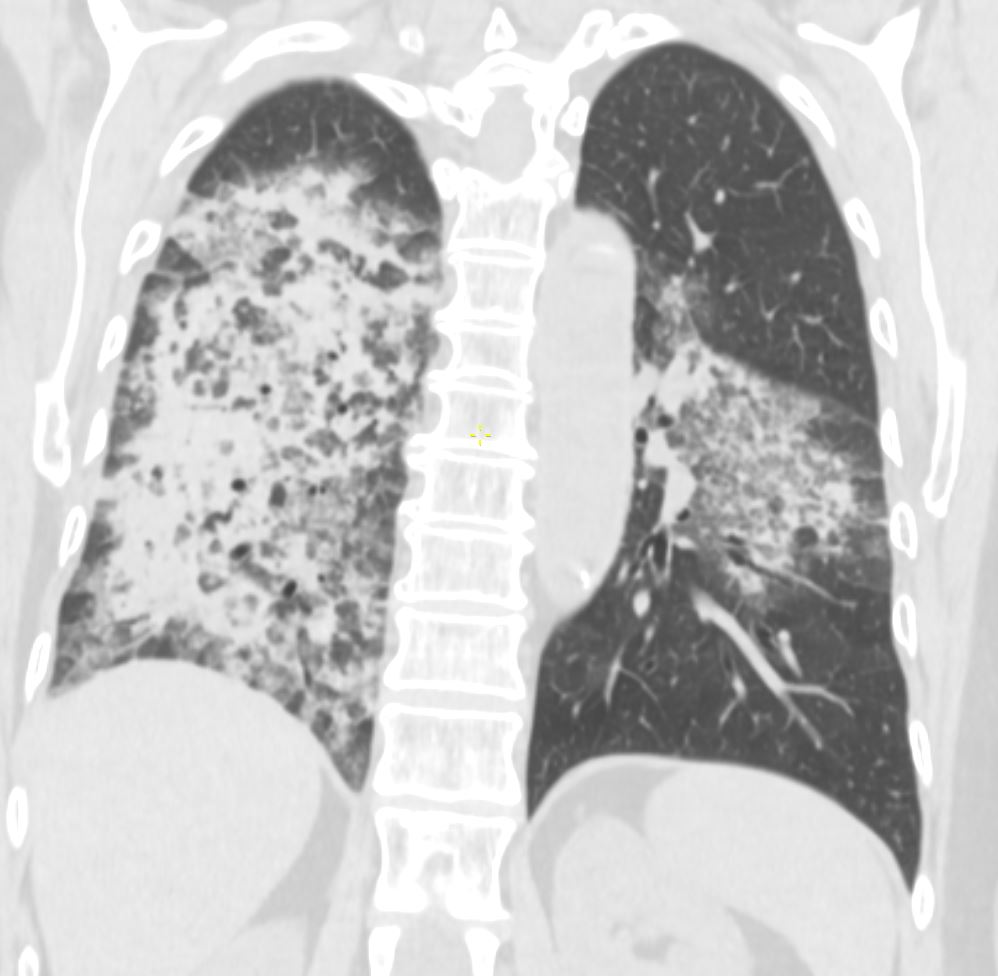
35 year old male in acute renal failure and respiratory distress with hemoptysis. CT shows multicentric segmental and subsegmental regions of consolidations and ground glass opacity in the upper and lower lobes with subpleural sparing consistent with pulmonary hemorrhage
Ashley Davidoff MD TheCommonV
ARDS Secondary to Trauma
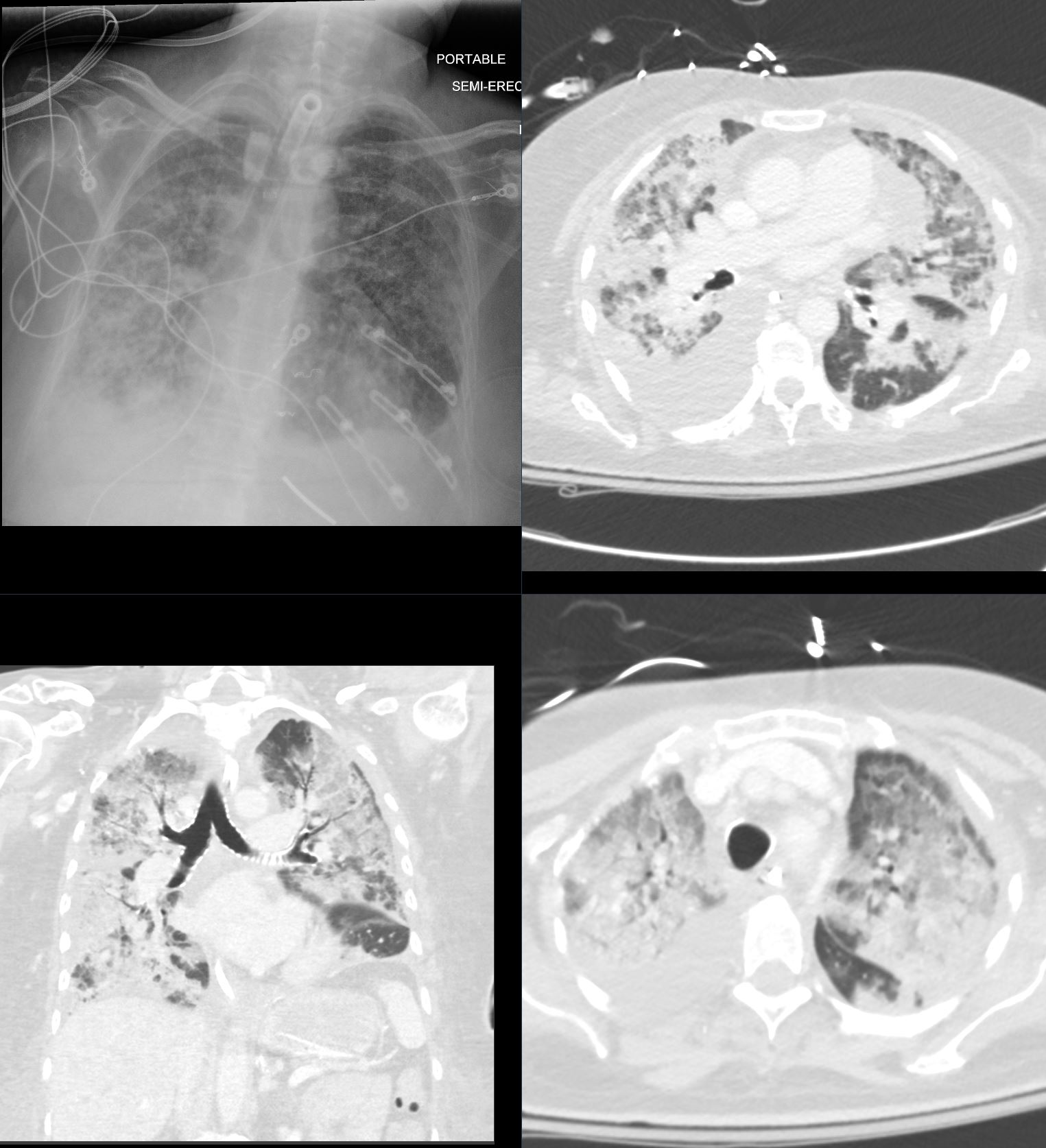
CXR and CT show diffuse ground glass changes of the lungs with some regions of focal consolidation and subpleural sparing. The subpleural sparing is better seen in the lower panels in the left lung. Right sided pleural effusion is present
Ashley Davidoff
TheCommonVein.net b11625
ARDS Secondary to
Acute Chest Syndrome Sickle Cell Crisis
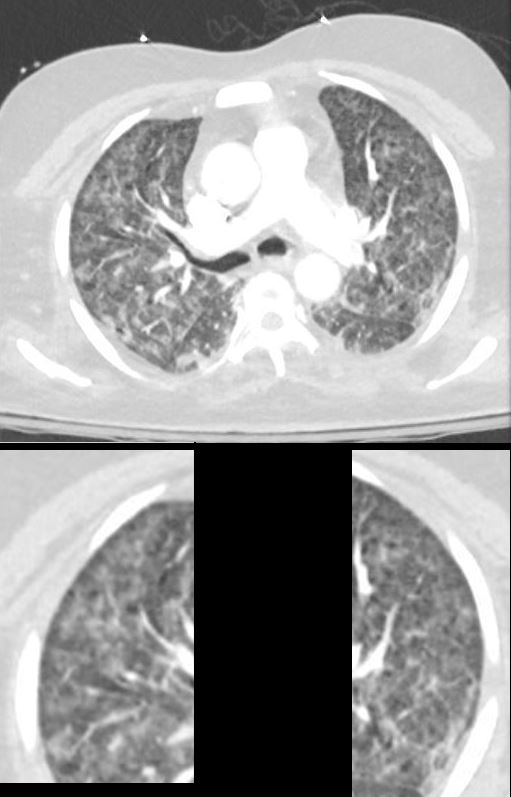
ARDS Sickle Cell Crisis
The CXR in this 26 year old male in sickle cell crisis shows diffuse and symmetrical ground glass changes with subpleural sparing
Ashley Davidoff TheCommonVein.net b11662-03
Crack Lung
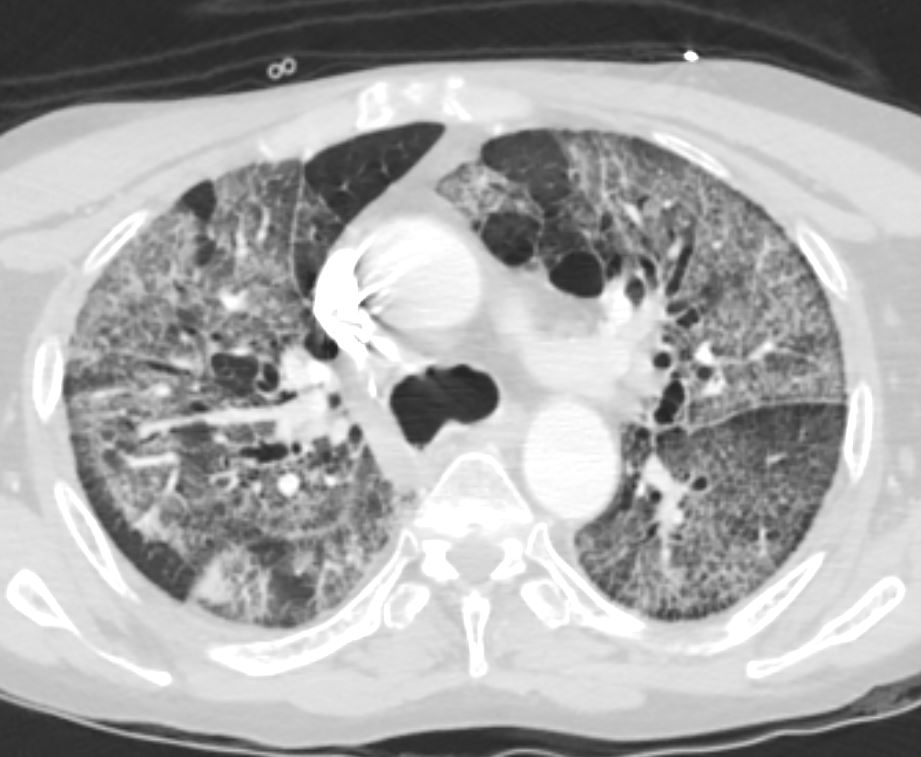
55 year old male with substance use disorder presents with progressive and now more severe dyspnea. CT through the upper lung fields shows extensive upper lobe ground glass changes with thickening of the interlobular septa giving the appearance of “crazy paving”. Thickening and irregularity of the left major fissure is also noted There is bilateral peripheral sparing.
Progressive inhalational pneumonitis from smoking or cocaine inhalation was suspected. DIP and hypersensitivity pneumonitis remained in the differential diagnosis
Ashley Davidoff MD TheCommonVein.net 251Lu 135924
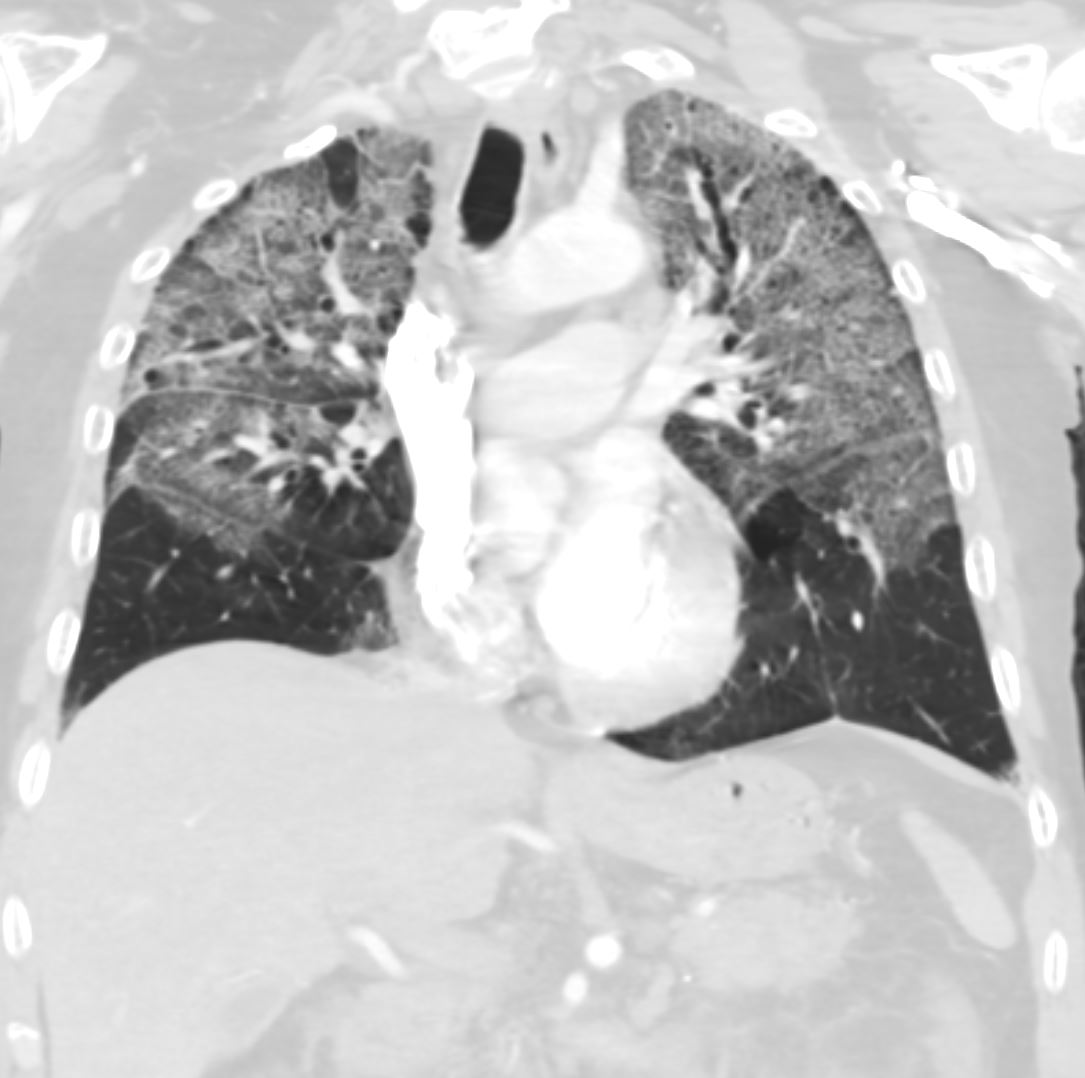
55-year-old male with substance use disorder presents with progressive and now more severe dyspnea. Coronal CT through the mid lung fields shows upper lobe predominant ground glass changes with thickening of the interlobular septa and a “crazy paving” appearance is suggested. The superior segments of the lower lobes are also involved. Thickening and irregularity of the right and left major fissures and the transverse fissure are noted. LVH is suggested.
Progressive inhalational pneumonitis from smoking or cocaine inhalation was suspected. DIP and hypersensitivity pneumonitis remained in the differential diagnosis
Ashley Davidoff MD TheCommonVein.net 251Lu 135934

55-year-old male with substance use disorder presents with progressive and now more severe dyspnea. Sagittal CT through the left lung field shows ground glass changes in the upper mid and superior segment of the lower lobe. The fissures of the areas of involved lung are focally thickened. There is subpleural sparing.
Progressive inhalational pneumonitis from smoking or cocaine inhalation was suspected. DIP and hypersensitivity pneumonitis remained in the differential diagnosis
Ashley Davidoff MD TheCommonVein.net 251Lu 135941
Circulatory
Aspiration Post Arrest and Resuscitation, Middle Lobe Ground Glass Opacification Subpleural Sparing

Axial CT scan at the level of the middle lobe of a 64-year-old female who arrested and required resuscitation is shown. Image a shows diffuse ground glass opacification in the lateral segment of the middle lobe with subpleural sparing (b, black arrowheads) most likely representing edema or hemorrhage. Bibasilar pneumonic infiltrates with bilateral effusions are present, exemplified and magnified in the right lower lobe (b, ringed in yellow)
Ashley Davidoff MD TheCommonVein.net 136192cL
Pulmonary Edema
Hemorrhage Contusion
Trauma
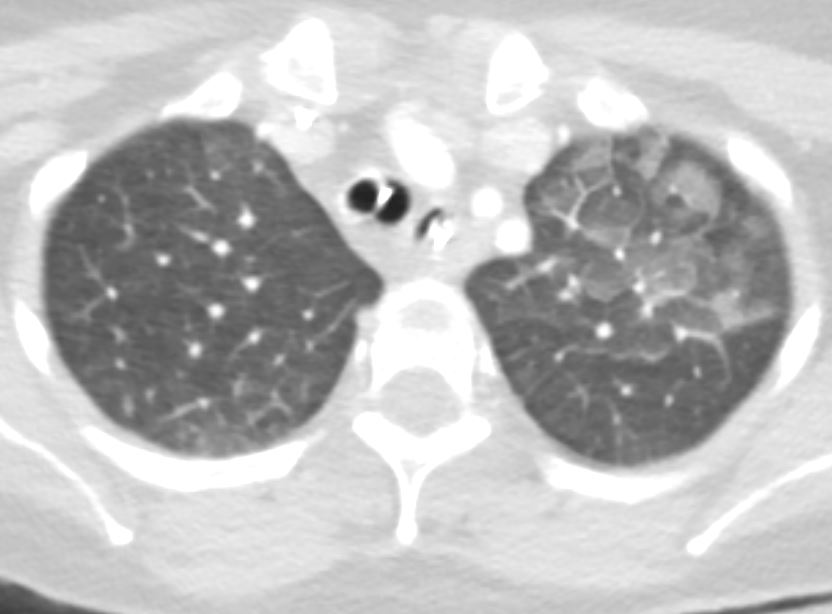
Axial CT following trauma and resuscitative attempts in a 37 year old female shows ground glass nodules and crazy paving in the left upper lobe
There is evidence of subpleural sparing with a more central distribution. In this clinical context these findings are consistent with hemorrhagic foci or edema following trauma
Ashley Davidoff MD TheCommonVein.net 137264
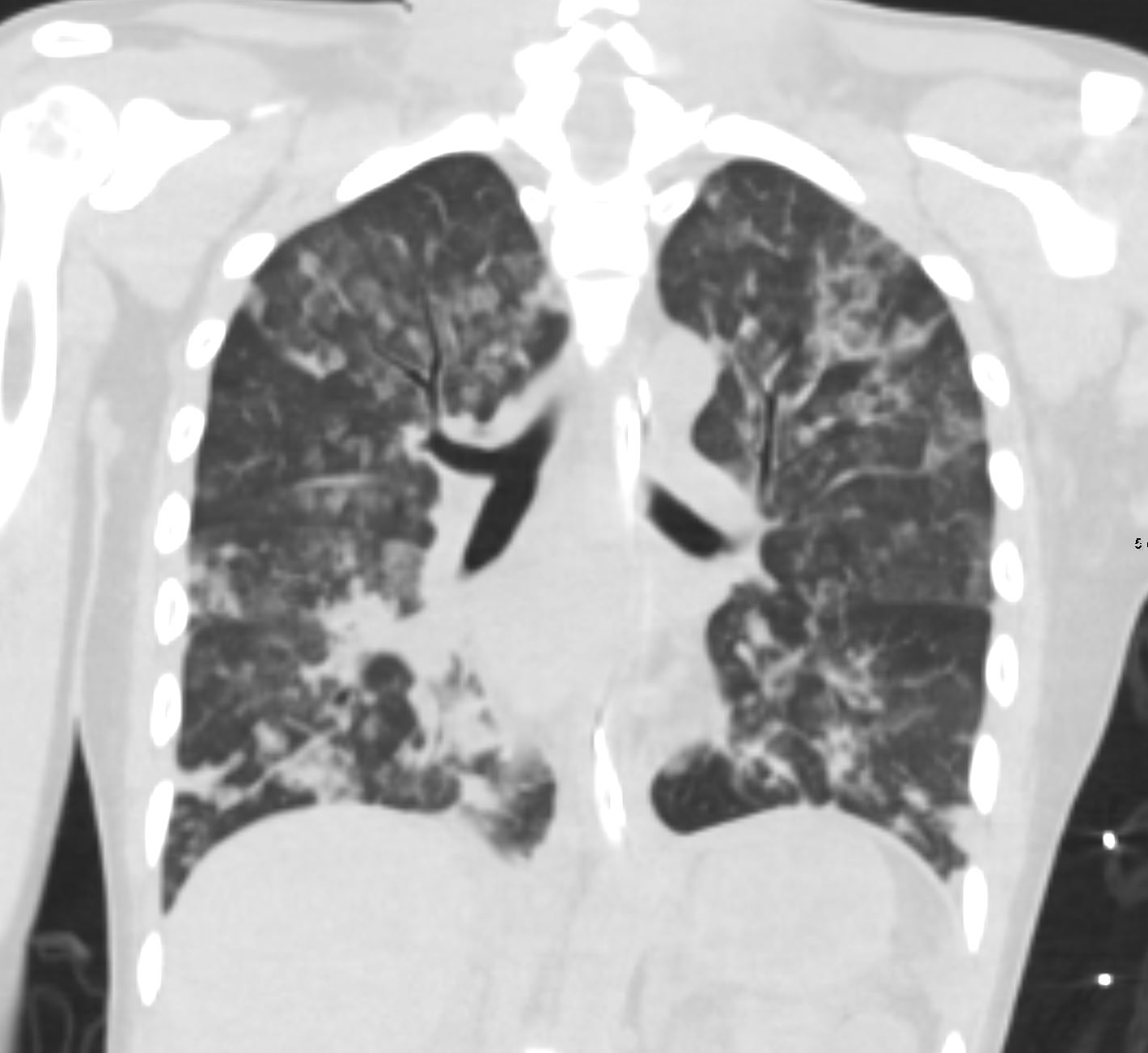
Coronal CT following trauma and resuscitative attempts in a 37 year old female shows 2-5mm solid and ground glass nodules in both the upper and lower lobes There are conglomerate changes with subsegmental consolidation .These findings are consistent with hemorrhagic foci of acinar shadows or acinar nodules following trauma. T
Ashley Davidoff MD TheCommonVein.net 137270 301Lu
ein.net 137275
